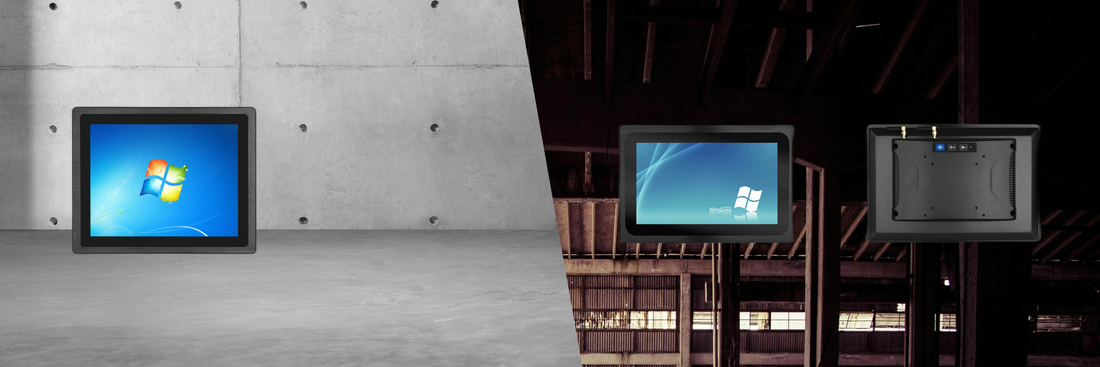
The Comprehensive Guide to Face Recognition Terminals and Their Applications
The Comprehensive Guide to Face Recognition Terminals and Their Applications
As technology continues to evolve, security systems have undergone significant advancements. One of the key innovations reshaping industries worldwide is the use of face recognition terminals. These biometric devices are revolutionizing security, access control, and identification processes across various sectors. This guide explores the intricacies of face recognition terminals, detailing their functions, applications, benefits, and the advanced technologies behind their operation.
- Understanding Face Recognition Terminals
Face recognition terminals are specialized biometric devices that use sophisticated algorithms to analyze and identify individuals based on their unique facial features. These terminals have replaced traditional identification methods like keycards and passwords, offering a more secure and efficient solution for identity verification.
Unlike manual verification systems, face recognition terminals are capable of rapidly scanning a face and comparing it to stored data within a matter of seconds. This method ensures that the technology remains efficient without compromising accuracy.
- How Face Recognition Terminals Operate
The functioning of a face recognition terminal is based on advanced image processing and data comparison algorithms. Below is a breakdown of the core steps involved:
- Image Capture: The terminal captures an image of the individual using an integrated camera.
- Feature Extraction: Unique facial features such as the distance between the eyes, nose width, and jawline are extracted from the captured image. These measurements create a distinct "facial template."
- Data Storage: The extracted data is stored securely in a system database, ensuring it is encrypted for enhanced protection.
- Image Matching: When a person needs to be verified, the terminal captures a new image and processes it. The system then compares the new image with the stored templates, allowing for near-instant identification.
- Granting Access: If the match is found, the system grants access or completes the task, such as clocking in attendance.
By employing sophisticated image analysis techniques, face recognition terminals can handle various environmental conditions like poor lighting or different facial expressions, ensuring accurate results regardless of external factors.
- Key Applications of Face Recognition Terminals
The versatility of face recognition technology means that it has found applications in numerous industries, providing benefits such as enhanced security, operational efficiency, and convenience.
3.1. Access Control and Security
Face recognition terminals have become a pivotal part of modern access control systems, especially in highly secure environments such as office buildings, research facilities, and government institutions. The technology provides a foolproof way to ensure only authorized personnel can gain entry.
3.2. Time and Attendance Management
For businesses, particularly those with large workforces, automating attendance systems through face recognition terminals offers an efficient solution. Employees no longer need cards or fobs to clock in and out, which reduces human error and prevents time theft.
3.3. Financial Transactions
In banking and finance, security is paramount. Many financial institutions are now incorporating facial recognition technology into their systems to authenticate transactions. By using biometric identification, the risk of fraud and identity theft is greatly diminished.
3.4. Retail and Customer Identification
Some retailers are integrating face recognition terminals for personalized customer experiences. By recognizing frequent shoppers, businesses can tailor recommendations or promotions, enhancing customer engagement.
3.5. Healthcare and Patient Management
In hospitals, face recognition terminals ensure the right personnel access sensitive areas and handle private patient information. Furthermore, they streamline the process of patient identification, ensuring accuracy in medical records.
- Advantages of Face Recognition Terminals
The increasing adoption of face recognition terminals can be attributed to the numerous benefits they offer across industries:
4.1. Enhanced Security
Facial recognition technology relies on biometric data, which is much harder to forge compared to traditional forms of identification like passwords or ID cards. This makes face recognition terminals ideal for securing sensitive environments such as data centers, labs, or high-security facilities.
4.2. Speed and Convenience
Face recognition terminals eliminate the need for physical tokens, cards, or remembering passwords. The user experience is seamless, requiring only a quick facial scan for access. This streamlines processes such as attendance tracking, transaction authentication, or access control.
4.3. High Accuracy
Advanced algorithms ensure that face recognition terminals maintain high levels of accuracy even in challenging conditions. Modern systems can account for changes such as aging, facial hair, or different lighting environments, providing consistent results over time.
4.4. Touchless and Hygienic
In a world where hygiene has become a critical concern, especially after the COVID-19 pandemic, the touchless nature of face recognition terminals offers a cleaner, safer method of authentication. No physical contact is needed, reducing the spread of germs in public or shared spaces.
- Potential Challenges and Ethical Considerations
While face recognition technology has many advantages, it also presents some challenges that must be addressed:
- Privacy Concerns: Since face recognition involves collecting and storing personal biometric data, there are growing concerns regarding privacy and data protection. Companies must ensure they comply with strict data security regulations to prevent misuse of sensitive information.
- Bias in Technology: Early facial recognition algorithms were found to be less accurate for certain ethnic groups, leading to potential biases. Ongoing improvements in AI and machine learning aim to reduce such disparities.
- Ethical Concerns: The widespread use of face recognition in public surveillance raises questions about its ethical implications. Striking a balance between security and personal freedom is essential for the responsible use of this technology.
- Future Trends in Face Recognition Technology
The face recognition industry is set to grow exponentially with continuous advancements in machine learning, AI, and camera technology. Here are some key trends that will shape the future of face recognition terminals:
6.1. Integration with AI Systems
By integrating AI, future face recognition terminals will offer even higher accuracy and adapt better to dynamic environments, such as varying lighting or crowd situations. AI will also allow these systems to recognize individuals from partial views or at longer distances.
6.2. Expanding Use in Public Spaces
Expect to see wider adoption of face recognition terminals in public spaces like airports, train stations, and stadiums for security, identity verification, and efficient crowd management.
6.3. Enhanced Privacy Features
To address growing privacy concerns, future terminals are likely to include features like decentralized data storage and encryption advancements, allowing users more control over their biometric information.
- Conclusion: The Future of Face Recognition Terminals
Face recognition terminals represent a pivotal shift in the way we approach security and identity verification. With their ability to provide quick, accurate, and contactless identification, they are increasingly being integrated across industries. The advancements in technology will only increase their scope and efficiency, making them a crucial tool for the future.
For industries seeking to enhance security protocols, manage large-scale access control, or streamline operations, face recognition terminals present a transformative solution.
For more information on how biometric solutions and advanced industrial touch systems can streamline processes across various sectors, visit IMDTouch or contact support@IMDTouch.com. Our solutions are tailored to meet the demands of modern industries, ensuring reliability, accuracy, and efficiency in every application.
